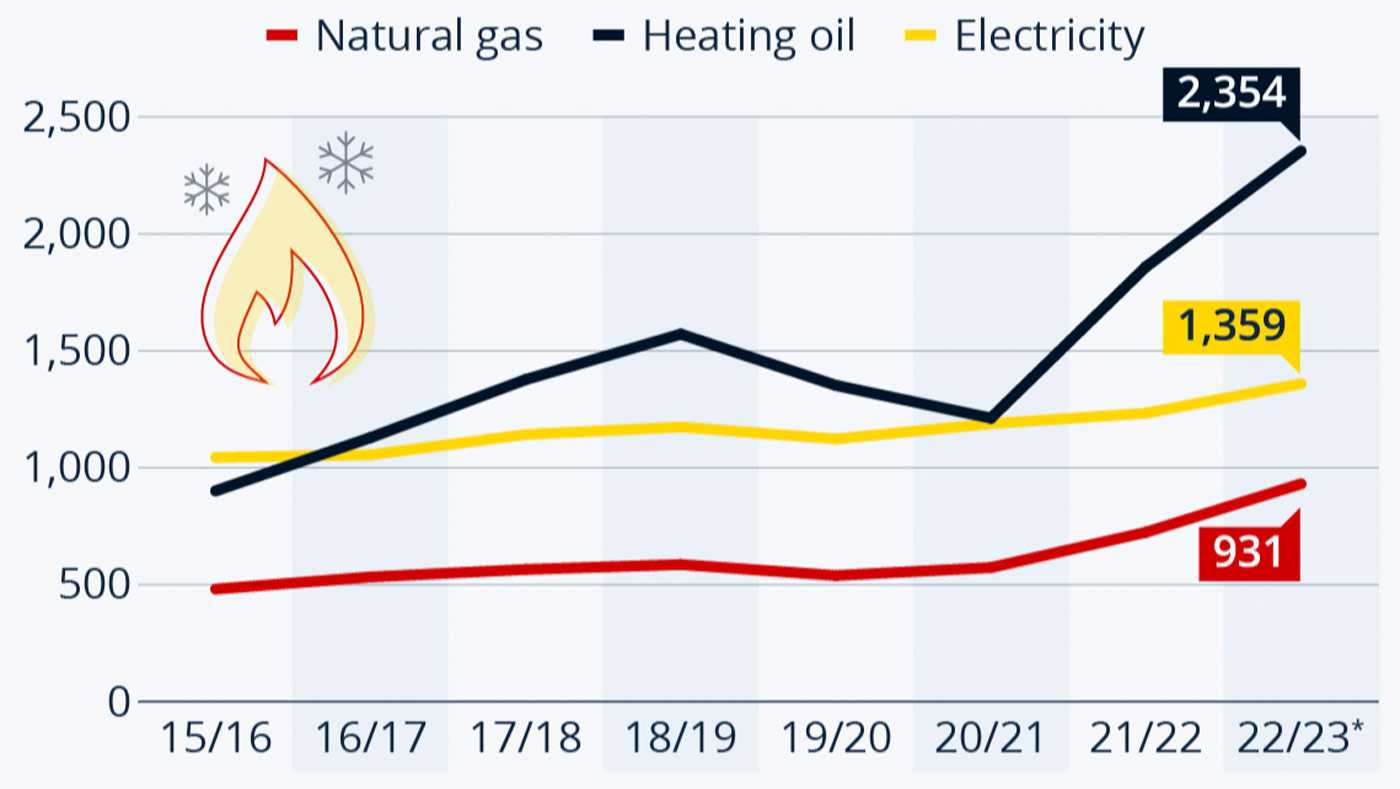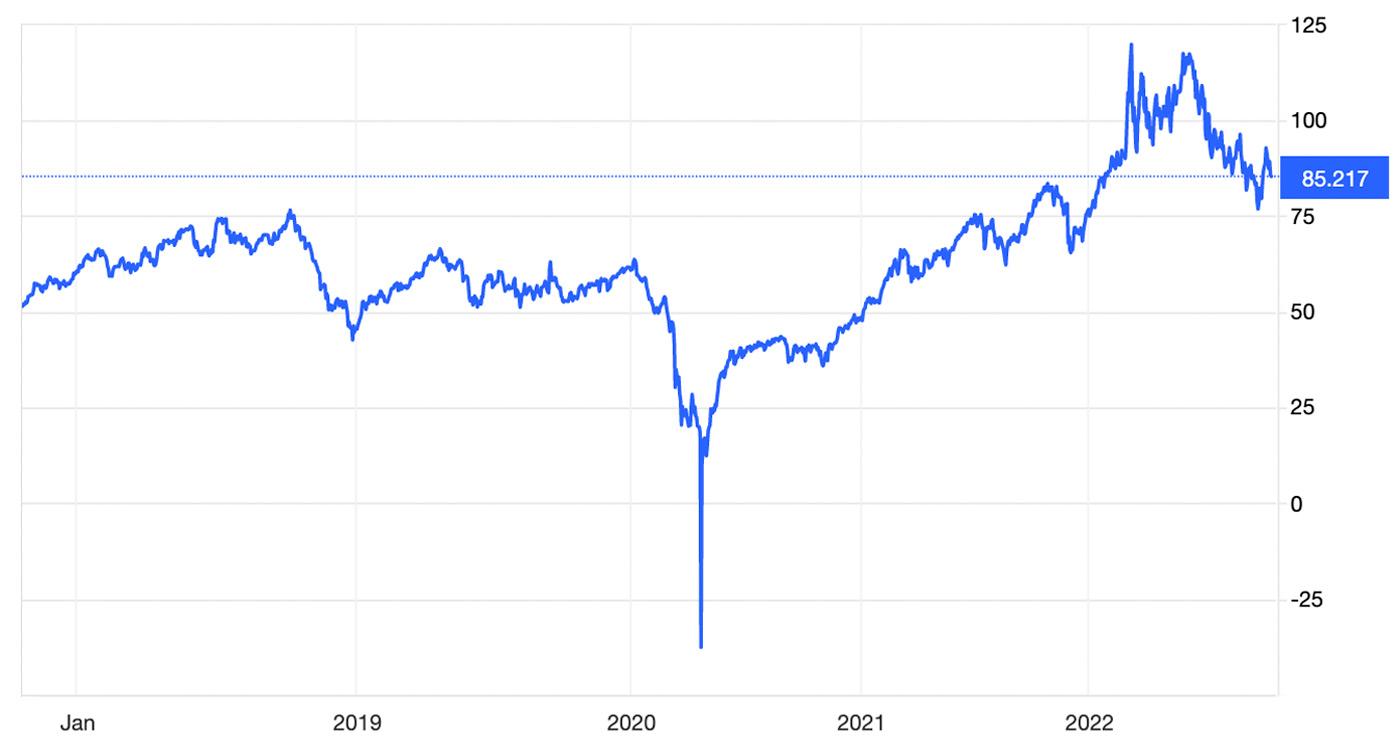
By mid-October in most northern tier states, homeowners have started to receive their first home heating oil deliveries. While consumers understood that costs would be up significantly this year, it is doubtful that many were expecting such large increases versus last season.
According to CT Insider, home heating oil prices have created a “guessing game” for many homeowners in Connecticut, who are unsure if they should lock in prices now for the season—or hope that prices will fall in coming months.
The publication noted in September,
“Connecticut homeowners could face $1,700 more in their heating bills through next May if prices do not budge from their current levels. … While prices peaked the second week of May at $6.37 a gallon, the average price of heating oil in Connecticut remains nearly 70 percent higher than a year ago.”
Data and analytical firm Statista reported the following last week on the national picture for various types of heating alternatives:
“A colder-than-average winter forecast and high energy prices will quite significantly raise heating costs for many U.S. consumers this winter, the Energy Information Administration reports in its Winter Fuels Outlook released Thursday.
“As the invasion of Ukraine and embargoes against Russian energy products have caused turmoil on global markets, oil price fluctuations are being more immediately passed on to consumers, for example through gasoline or heating oil prices rising quickly. Previously, heating oil consumers had experienced a big dip in cost due to the Covid-19 pandemic slashing global oil demand. In the case of gas and electricity, longer-running wholesale contracts are delaying price swings hitting consumers with full force, even though quickly rising prices in the spot market (where providers can buy energy on short notice) have also caused prices to tick up.
“The forecast expects households that heat with oil or gas to experience an increase in cost of 27 percent and 28 percent, respectively, compared to 2021/22. Those that heat with electricity—still the less cost-efficient option compared with gas—will experience prices rising by 10 percent, as electricity is generated from several sources, including but not limited to oil and gas. The report includes full regional breakdowns for gas and electricity heating, showing that gas heating households in the Northeast and Midwest are projected to pay $1,000-$1,100 for the season, while those in the West and South will shell out between $700-$800. For electric heating, costs are expected to hit $1,400-$1,700 in all regions but the South, where they will come in at around $1,250.”
FIGURE 1: AVERAGE U.S. HOUSEHOLD EXPENDITURE ON HEATING THIS SEASON—BY FUEL TYPE (IN U.S. DOLLARS)

*Forecast
Sources: Statista, Energy Information Administration
Although both oil and gas prices have seen declines since the summer, crude oil futures are generally about 100% higher than during the heating oil season in 2020 and anywhere from 10% to 35% higher than last year’s season (depending on the month). While there are many reasons to blame for this, including the invasion of Ukraine and supply-chain issues, the production levels of major oil producers outside of the U.S. remain a major factor.
Oilprice.com reported last week,
“The OPEC+ group’s crude oil production rose in September to the highest level since the Saudi-Russia price war of April 2020, but producers in the pact remained a massive 3.6 million barrels per day (bpd) below their collective output quota, the Platts survey by S&P Global Commodity Insights showed.”
FIGURE 2: 5-YEAR PRICE TREND FOR CRUDE OIL WTI (USD/BBL)

Source: Trading Economics, data as of 10/17/2022
New this week:
